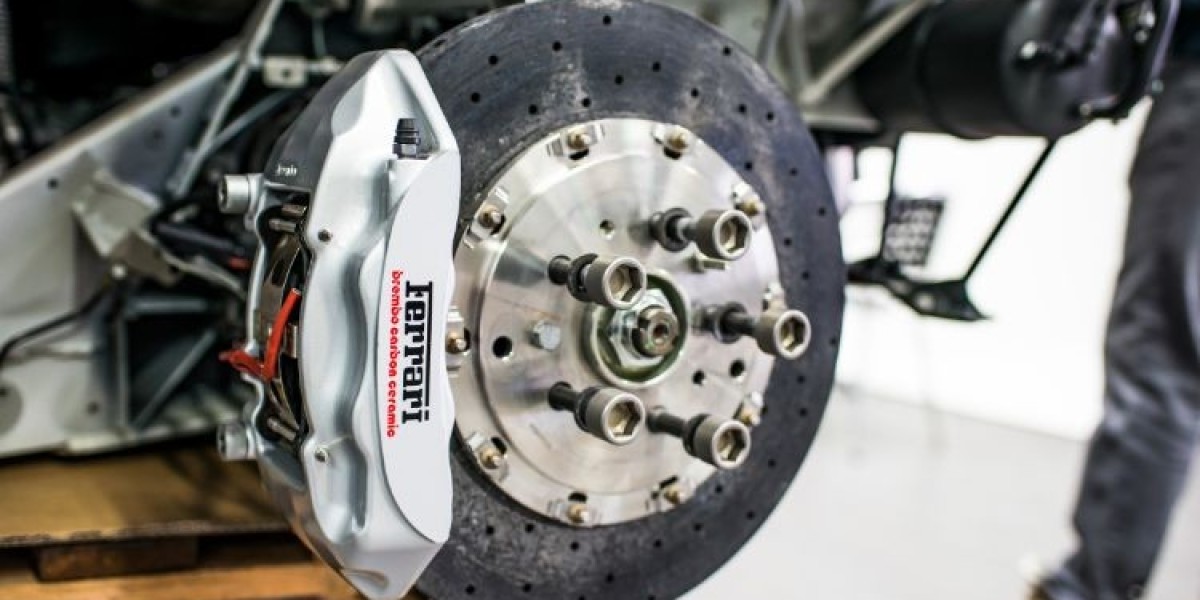The global automotive industry is undergoing a significant transformation, driven by a growing emphasis on sustainability and energy efficiency. One of the key technologies propelling this shift is the regenerative braking system. The global Automotive Regenerative Braking System Market Size is estimated to grow at a CAGR of 15.10% in the forecast period of 2024-2032, highlighting the increasing adoption of this technology in electric and hybrid vehicles. But what exactly are regenerative braking systems, and how do they benefit these types of vehicles?
Regenerative Braking: Capturing Energy on the Go
Electric and hybrid vehicles rely on electric motors for propulsion. Unlike traditional gasoline-powered cars that use friction brakes to convert kinetic energy (the energy of motion) into heat, regenerative braking systems in electric and hybrid vehicles harness this kinetic energy during braking and convert it back into electrical energy. This captured energy is then stored in the vehicle's battery, reducing the need to draw power solely from the external grid or internal combustion engine (in hybrids).
In simpler terms, imagine you're driving down a hill and take your foot off the accelerator. In a traditional car, the brakes would engage, converting your car's momentum into heat. With regenerative braking, the electric motor acts as a generator, capturing that energy and storing it for later use.
Regenerative Braking: A Boon for Efficiency and Battery Life
The benefits of regenerative braking systems are multifold, making them a game-changer for electric and hybrid vehicles. Here's a closer look at the key advantages:
Enhanced Energy Efficiency: Traditional braking systems waste a significant amount of energy as heat. Regenerative braking captures this lost energy, effectively recharging the battery and improving the vehicle's overall energy efficiency. This translates to a longer driving range on a single charge or a reduction in fuel consumption for hybrids.
Extended Battery Life: Frequent charging cycles can take a toll on a battery's lifespan. Regenerative braking reduces the strain on the battery by replenishing its charge through braking. This not only extends the battery's lifespan but also lowers long-term ownership costs for drivers.
Improved Performance: Regenerative braking systems can offer a smoother and more controlled braking experience compared to traditional friction brakes. Additionally, the captured energy can be used to enhance other vehicle systems, potentially leading to improved acceleration and overall driving dynamics.
Environmental Impact: By boosting energy efficiency and reducing fuel consumption, regenerative braking systems play a crucial role in lowering a vehicle's carbon footprint. This translates to cleaner air and a smaller contribution to climate change.
Promoting Sustainability: Regenerative braking promotes a more sustainable future for transportation by reducing reliance on fossil fuels and promoting the use of renewable energy sources that can be used to charge electric vehicles.
Safety Considerations: Adapting to a New Braking Experience
While regenerative braking offers numerous advantages, there are a few safety considerations to keep in mind:
Increased Stopping Distances: In some cases, regenerative braking alone may result in slightly longer stopping distances compared to traditional friction brakes. Drivers may need to adjust their braking habits to compensate, especially during emergency situations.
Seamless Integration: Thankfully, most modern regenerative braking systems work seamlessly in conjunction with traditional friction brakes. The vehicle's computer system manages the braking force, ensuring optimal performance and driver safety.
Advancements and Opportunities in Regenerative Braking
The field of regenerative braking is constantly evolving. Here's a glimpse into what the future holds for this technology:
Improved Efficiency and Energy Capture: Ongoing research and development efforts are focused on maximizing the efficiency of regenerative braking systems. This includes optimizing power electronics and motor design to capture even more energy during braking.
Vehicle-to-Grid (V2G) Technology: Regenerative braking systems have the potential to play a role in V2G technology. This concept allows electric vehicles to not only draw power from the grid but also feed excess captured energy back into the grid during off-peak hours. This bi-directional flow of energy can contribute to a more stable and efficient electric grid.
Standardization and Regulations: As the Automotive Regenerative Braking System Market continues to expand, the need for standardized testing procedures and regulations becomes increasingly important. This will ensure consistent performance and safety across different vehicle models and manufacturers.
The Future of Electric and Hybrid Vehicles: Powered by Regeneration
The Automotive Regenerative Braking System Market is booming, and for good reason. Regenerative braking offers a plethora of benefits for electric and hybrid vehicles, improving efficiency, extending battery life, and promoting a more sustainable future for transportation. As technology continues to evolve, we can expect even more advanced regenerative braking systems to emerge, further enhancing the driving experience and environmental impact of electric and hybrid vehicles.








